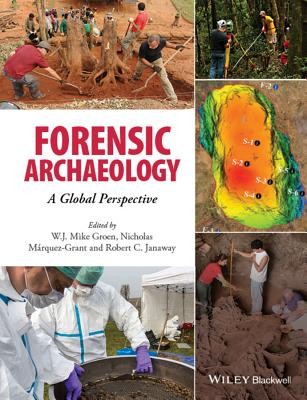
- We will send in 10–14 business days.
- Author: W J Mike Groen
- Publisher: Wiley-Blackwell
- ISBN-10: 1118745981
- ISBN-13: 9781118745984
- Format: 18.5 x 25.2 x 3.3 cm, hardcover
- Language: English
- SAVE -10% with code: EXTRA
Reviews
Description
Forensic archaeology is mostly defined as the use ofarchaeological methods and principles within a legal context.However, such a definition only covers one aspect of forensicarchaeology and misses the full potential this discipline has tooffer. This volume is unique in that it contains 57 chapters fromexperienced forensic archaeological practitioners working indifferent countries, intergovernmental organisations orNGO's. It shows that the practice of forensic archaeologyvaries worldwide as a result of diverse historical, educational, legal and judicial backgrounds. The chapters in this volume will bean invaluable reference to (forensic) archaeologists, forensicanthropologists, humanitarian and human rights workers, forensicscientists, police officers, professionals working in criminaljustice systems and all other individuals who are interested in thepotential forensic archaeology has to offer at scenes of crime orplaces of incident. This volume promotes the development offorensic archaeology worldwide. In addition, it proposes aninterpretative framework that is grounded in archaeological theoryand methodology, integrating affiliated behavioural and forensicsciences.
EXTRA 10 % discount with code: EXTRA
The promotion ends in 18d.00:21:55
The discount code is valid when purchasing from 10 €. Discounts do not stack.
- Author: W J Mike Groen
- Publisher: Wiley-Blackwell
- ISBN-10: 1118745981
- ISBN-13: 9781118745984
- Format: 18.5 x 25.2 x 3.3 cm, hardcover
- Language: English English
Forensic archaeology is mostly defined as the use ofarchaeological methods and principles within a legal context.However, such a definition only covers one aspect of forensicarchaeology and misses the full potential this discipline has tooffer. This volume is unique in that it contains 57 chapters fromexperienced forensic archaeological practitioners working indifferent countries, intergovernmental organisations orNGO's. It shows that the practice of forensic archaeologyvaries worldwide as a result of diverse historical, educational, legal and judicial backgrounds. The chapters in this volume will bean invaluable reference to (forensic) archaeologists, forensicanthropologists, humanitarian and human rights workers, forensicscientists, police officers, professionals working in criminaljustice systems and all other individuals who are interested in thepotential forensic archaeology has to offer at scenes of crime orplaces of incident. This volume promotes the development offorensic archaeology worldwide. In addition, it proposes aninterpretative framework that is grounded in archaeological theoryand methodology, integrating affiliated behavioural and forensicsciences.


Reviews